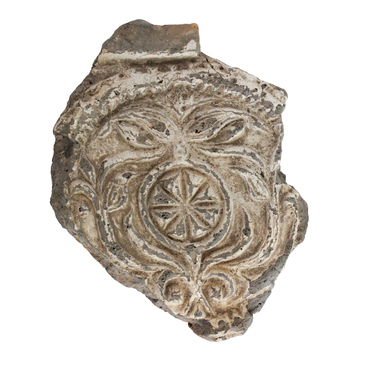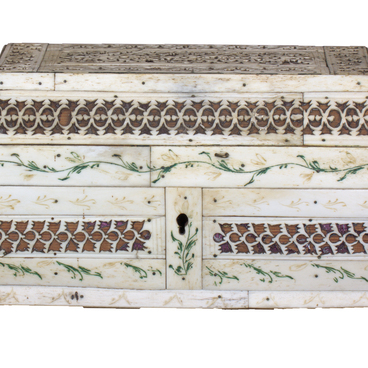This white stone plate with the image of a unicorn is one of the earliest additions to the museum. In the very first catalogue of the Arkhangelsk Regional Museum of 1898, it is described as ‘a stone coat of arms from a former mint’.
Under the order of the Mint, by decree of Catherine II in 1796, in Arkhangelsk the premises of the German marketplace, which remained at that time, were used for accommodation and to store goods of foreign merchants who came to Arkhangelsk to a trade fair. Given this fact, the image of a unicorn on a tablet found in the complex in the middle of the 19th century was originally associated with foreign heraldry. In the pre-revolutionary documentation of the museum, it is sometimes referred to as the ‘Dutch coat of arms’, however, in all probability, it is not.
A much more realistic assumption is that this image of a unicorn is connected to Russian state symbols. In Russian culture, the ‘foreign fierce beast’ from the time of the Grand Duke of Moscow Ivan III to the reign of Tsar Alexei was depicted on state seals and coins, grand-ducal and tsar ceremonial items. The unicorn (with a lion) as a symbol of scholarship and high status has become a trademark of the Moscow Printing House, built by Ivan the Terrible in the middle of the 16th century. Images of unicorns adorned the interiors of princely chambers, manuscripts, tiles and other objects of art. Arkhangelsk since its foundation and Peter’s decrees of 1714-1721 was the only seaport in Russia, and the Arkhangelsk markets were a face of the country, so such symbols being in its walls is justified.
On this object, the image of the unicorn on the background of a flowering bush is a low relief in the “ark” and is placed in a frame decorated with a double spiral. The tablet is square and is carved from Orletsky limestone.
Carved stone in the North was not widely used in architecture. In the 17th century it was used to decorate cathedrals and churches, and to create tombstones. A few fragments of carved white stone details are preserved from the portal of the church of St. Martyrs Boris and Gleb, built in the Matigory in 1686.



